| All Artists: Johannes Brahms, Simon Rattle, Berlin Philharmonic Orchestra Title: Brahms: Complete Symphonies Members Wishing: 0 Total Copies: 0 Label: EMI Classics Original Release Date: 1/1/2009 Re-Release Date: 10/6/2009 Album Type: Box set, Enhanced, Import Genres: Special Interest, Classical Style: Symphonies Number of Discs: 3 SwapaCD Credits: 3 UPC: 5099926725420 |
Search - Johannes Brahms, Simon Rattle, Berlin Philharmonic Orchestra :: Brahms: Complete Symphonies
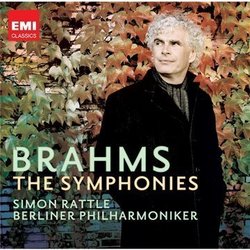 | Johannes Brahms, Simon Rattle, Berlin Philharmonic Orchestra Brahms: Complete Symphonies Genres: Special Interest, Classical
Sir Simon Rattle and the Berliner Philharmoniker have recorded the complete symphonies of Johannes Brahms live in a series of concerts from the Philharmonie, Berlin. This is a major recording of music that is central to th... more » |
Larger Image |
CD DetailsSynopsis
Album Description Sir Simon Rattle and the Berliner Philharmoniker have recorded the complete symphonies of Johannes Brahms live in a series of concerts from the Philharmonie, Berlin. This is a major recording of music that is central to the tradition of the 127-year-old orchestra, and is bound to be as groundbreaking and revelatory as Rattle's earlier recording of the complete Beethoven symphonies with the Vienna Philharmonic. The combination of the incomparable sound and musicianship of the Berliner Philharmoniker and the iconoclastic, visionary approach that has characterized Sir Simon's music-making over the past thirty years is likely to result in a set of recordings that will challenge, invigorate, and refresh this well-known and cherished repertoire. Rattle's first Brahms recording with the Berliner Philharmoniker, Ein deutsches Requiem, won critical accolades and both Grammy® and Classic FM/Gramophone Awards. Now Sir Simon and the Orchestra have committed to disc the complete Brahms symphonies, recorded in concert at Berlin's Philharmonie in Autumn of 2008. In the words of Die Zeit, "Simon Rattle has finally dared to tackle Brahms with the Berliner Philharmoniker. He combines Furtwängler's monumentality with Karajan's beautiful sound . . .". Rattle confirms that performing these works with the Berliner Philharmoniker, which has been hailed as the world's greatest Brahmsian, orchestra "gives you a possibility of colours that you have almost nowhere else. . . . I can say to this orchestra, `I need a different sound' and the sound changes immediately." Similar CDs
|
CD ReviewsThe first great Brahms cycle since the Karajan era Santa Fe Listener | Santa Fe, NM USA | 10/06/2009 (5 out of 5 stars) "Conductors have big enough egos that they don't hold their breaths waiting for approval, which will shower them anyway. But Simon Rattle has waited a while before meeting Karajan, his illustrious Berlin predecessor, head on in the music that was one of Karajan's greatest strengths. As toe-dipping exercises we've had a German Requiem and a couple of First Piano Concertos. The four symphonies are the Himalayas of Brahms's output, however, and now that Rattle has taken them on all at once, how has he fared? Sym. #1: From the opening bars the faint rustling of the audience tells us that this is a live concert, but the sound surpasses Karajan's best-engineered studio account (the last, digital one from 1987). It is rich, natural, and detailed. As for the orchestra's overall sound, it's more softly contoured than under Karajan, also not as monolithic. Rattle asks for sensitive, personal playing from his solo players, with less emphasis on the tidal wave of sound that Karajan favored. The phrasing is more energetic than under Abbado, whose Brahms cycle was earnest and unimaginative. In short, all the technical aspects are first-rate. Who would expect anything less? But the Brahms First enjoys a history of iconic interpretations on disc, and it's up to Rattle to show some individuality. The import of the first movement isn't tragic or driven with fateful energy. In fact, Rattle seems almost relaxed in this music of struggle and conflict. He uses rubato to mold phrases and tries to catch the subtler shades of each mood. Happily, the Berliners can accomplish that while sounding powerful and virtuosic. I can't put Furtwangler's deeply tragic, turbulent account out of my head, but even so, I was engrossed in Rattle's very different approach. This is Brahms played for beauty and tenderness. The second movement continues in the same vein, with exquisite lyrical playing in the strings and woodwind solos. The pace is kept on the urgent side, which helps a great deal to keep the line from dawdling. Far more importantly, Rattle is engage emotionally, a bit of a surprise but a great relief. The Scherzo is all lightness and restrained ebullience. Brahms can be made more unbuttoned, but this is still wonderfully expressive playing. In the finale, I want a premonitory beginning leading to dark moods that erupt in the sunshine of the great tune. Rattle meets that expectation halfway - the opening is hushed and atmospheric, not brooding. The great horn entry is a hymn, taken slowly and reverentially. Despite the absence of tragic implications, Rattle's way seems valid, even if the big tune doesn't open the skies as it should. We get a lighter, brighter, less dramatic finale that is exceptionally well executed and paced. So count the First a success, setting the tone -- more Bruno Walter than Toscanini -- for Rattle's entire cycle. If comparative timings are of interest, here they are: Karajan 1987 Rattle Mvt. 1 -- 13:22 13:59 Mvt. 2 -- 8:22 9:12 Mvt. 3 -- 4:46 4:52 Mvt. 4 -- 17:38 16:52 Sym. #2: The aging Walter (on Sony) was most successful in the Brahms Second, and I anticipated an updated version of his account from Rattle, but far better played and recorded. So it is. Rattle follows the autumnal Walter in being tender and lyrical but not to a fault. The line never sags; the pace doesn't meander. The conductor is alert to supple changes, as he was in the First. There's inner life here, without a hint of Rattle's unwelcome fussiness (or the self-consciousness that spoils the Brahms of Barenboim and Eschenbach). I was convinced that the Second comes naturally to him -- and to the Berliners, of course. The first movement is less grand than Karajan's but more varied and eager, too. There's even some turbulence in the development. The trick with the slow movement is that it can sound very like the first movement. It's not just a matter of pace but mood; two flowing pastoral movements in a row provide little contrast in feeling. Rattle is effective in making the Adagio non troppo sufficiently brooding and melancholy where he can. Still, the overall pacing and urgent feeling may seem to some listeners an extension of the first movement. Everything else about the slow movement is very satisfying. Brahms undercuts the contrast of the Scherzo by asking for it to be "quasi Andantino," but Rattle ignores this to give us a quick-moving Allegretto, not as muscular as Karajan's, who had the same good instincts, but more dancing. I appreciate how light on its feet this movement is after so many dull, dutifully Germanic readings over the years. For once the 'grazioso' element dominates. The finale of the Second is a slam dunk for any conductor who doesn't make the mistake of dawdling and who dramatizes the explosive main theme. Ideally, the explosion should be one of runaway exuberance (as it was in Walter's mono account with the New York Phil.). Rattle could be more mysterious, and quicker, in the introduction, but once he lets the main theme erupt -- here a fairly soft eruption -- there is an exuberant feeling. Some reticence in the development section feels misplaced, but that's not a major flaw, thanks to the Berliners' alert, vivid playing. In short, Rattle's Second is at least up to the level of his First, and for many may be even better, because the work is more suited to a less than heroic approach. (If only he'd let the orchestra off the reins in the finale.) Karajan 1987 Rattle Mvt. 1 -- 15:45 15:20 Mvt. 2 -- 9:46 9:39 Mvt. 3 -- 5:21 5:27 Mvt. 4 -- 9:20 9:38 Sym. #3: The first movement of the Third is generally conceded to be the most difficult to hold together, and it takes a great Brahmsian (Furtwangler, Karajan, Walter, Klemperer, Bernstein) to be totally convincing. Rattle doesn't attack the impetuous, plunging opening measures. He's very successful at providing contrast in the second theme, however, and the pacing, although fairly relaxed, never loses momentum. The Third can be tailored to sound like Brahms's "other" pastoral symphony, not my preferred approach but certainly viable. Even without Karajan's towering drive, the Berlin strings are magnificent, and Rattle's handling of the whole development section is exciting. The intricate cross-currents of this opening movement could hardly be done better. The second movement is taken at a fairly relaxed pace, also, but you wouldn't notice since the phrasing contains so much variety and shading. Rattle feels this movement with a moody intensity comparable to Bernstein's. The third movement is the least scherzo-like of Brahms's Scherzos, and although Rattle's pacing isn't slow, he never allows the tinge of melancholy to escape. Rattle loves half-light. He has a gift for sad music that's also supple and refined. (In fact, cutting loose with simple joy isn't a thing he seems to welcome.) If you're going to be mournful in the third movement, the finale demands a release. Rattle sets a good strong pace, although not as portentous and mysterious as it might be. He lets the main theme for cellos and horn have its head -- almost. I wish the music had broken free completely, but Rattle's control isn't stifling, much less does he make me want to kick him along. In sum, this is a refined, moody Third that is exceptionally well handled and stupendously played. It doesn't join Karajan at the summit but comes very near. Karajan 1987 Rattle Mvt. 1 -- 9:34 13:51 (taking the repeat) Mvt. 2 -- 8:08 9:18 Mvt. 3 -- 6:15 6:44 Mvt. 4 -- 9:11 9:18 Sym. #4: Perhaps I'm unrealistic, but for me even Furtwangler and Karajan don't fully capture what the Fourth is about. Their readings, at least four tries from each conductor, aren't comparable in tension and catharsis to their towering accounts of the First Sym. Only Carlos Kleiber, in his legendary recording from Vienna (DG), makes me feel both exhilarated and wrung out at the end. So I come to a parting of the ways with Rattle's lyrical conception of the first movement, which is refined and at times gentle. I hear more struggle in this movement, but setting my expectations aside, his performance is controlled and beautiful, just far too buttoned up. Admirers would call it classically restrained and elegiac. The second movement can be fervent and anguished -- Bernstein did it that way -- but Rattle takes the usual, more subdued approach. He sounds like Chailly and Dohnanyi, on the verge of elegance. On its own terms, the performance is undoubtedly eloquent. "Jocose" isn't a word we use much anymore, but merry is how Brahms wants the Scherzo to sound. The joke may be a bit ponderous, but conductors should at least try. Rattle manages very well. In fact, his conducting wakes up here for the first time in the Fourth. There's exuberance and thrust; he avoids the temptation to let the heavy bass line add an oppressive weight. I would wish for even more urgency, but this is an exciting rendition. Now to the great finale in passacaglia form. To succeed, it's not enough that the structure be as rigorous as Bach; Brahms's fervent Romantic side much be brought out fully, and in addition, the build-up to the climax must resound tragically. I feared that Rattle wouldn't have the musical instincts to fuse these opposed aspects, but from the outset he voices the harmony and handles the pacing with great skill (Karajan, for once, is too rough and coarse). Nothing is brash or sloppy here. The middle section grows too ruminative for a brief while, and the flute solo isn't heartrending, but Rattle quickly finds the pace again. No catharsis at the end, alas, but a good, strong finish nonetheless. In short, a mixed decision, with the last two movements being the most persuasive. Other listeners who don't mind a cool, classical Fourth will be happier than I was. Karajan 1987 Rattle Mvt. 1 -- 13:00 13:21 Mvt. 2 -- 11:35 12:13 Mvt. 3 -- 6:24 6:25 Mvt. 4 -- 10:39 10:21 No single conductor, with the exception of Furtwangler, has found in these titanic scores as much as Brahms put in them. In modern sound Karajan and Bernstein came closest -- others would nominate Celibidache. Yet I have no hesitation in calling Rattle's new cycle the best since Karajan's heyday. He's a natural at this music, and hearing the Berliners on sacred ground is itself cause for celebration." In A Word: Incredible J. Rich | 11/08/2009 (5 out of 5 stars) "Simon Rattle conducting Brahms? I never would have thought that this set would be worth acquiring, especially considering that I already own what I consider to be the best Brahms symphony cycles: Solti, Harnoncourt, Dohnanyi, Abbado, Bohm, and Karajan, then I started reading all of the glowing reviews on Amazon and other websites that said this cycle is one of the best ever recorded. Is that a fair assessment calling the Rattle Brahms set one of the best ever? Compared to all of the other sets I've heard: yes, it is. The other reviewers certainly wrote great enthusiastic reviews (and quite detailed ones at that), so all I can do is really second their enthusiasm for this current cycle. It seems that Rattle brings out some of the darker elements in Brahms' music. In lesser hands, you have a conductor on the podium who tries to be too classically-oriented with this music. Brahms was a bleeding heart Romantic and in my opinion should be played that way. Another thing that was great was Rattle brought out more textures from the woodwinds, especially in the finale of "Symphony No. 2," which I haven't heard so clearly defined on any other set. Rattle gives all symphonies much clearer-headed readings where every note is considered, but this is Rattle's approach in general. He's a detail-oriented conductor much like Boulez in the sense that he lays the structure of the music right out in front you in a very accessible way. The Berliners play fantastic too. I've never heard them sound so energized and passionate or at least not recently. All of these recordings were recorded live and the audio quality is fantastic. All sections of the orchestra never sounded better. Perhaps Rattle's Brahms is the work of someone who genuinely likes Brahms. Rattle has had some failures in the past with Haydn, Berlioz, Dvorak, Beethoven, and Schubert to name a few, but his Brahms is truly a spectacle to behold. Highly recommended." Success with standard repertoire M. Hess | 11/21/2009 (5 out of 5 stars) "Finally, Rattle has produced standard repertoire renditions that can be considered a milestone. This release is the finest, most consistent set of Brahms symphonies since the Klemperer boxed set. He may be a little soft-grained at times, particularly in the first sypmhony where Klemperer is more heroic and menacing, but he has the full measure of the second and fourth which are equal with the best. His third, while excellent, does not have the cohesive drive that Toscanini brought to his performance with the Philhamonia Orchestra during his 1952 tour of England. Karajan, in all his series, is far too self-indulgently obsessive with rich sonorities, and Abbado's performances of the symphonies are four-square, unimaginatively phrased and plodding. A must-have set for all Brahms lovers."
|

 Track Listings (4) - Disc #1
Track Listings (4) - Disc #1







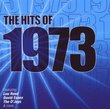
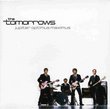
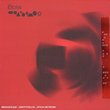

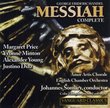
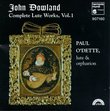

![Ravel: Daphnis et Chloé Suites; Ma Mère l'Oye; Valses nobles et sentimentales [Hybrid SACD]](https://nationalbookswap.com/cd//m/71/4471/6124471.jpg)
